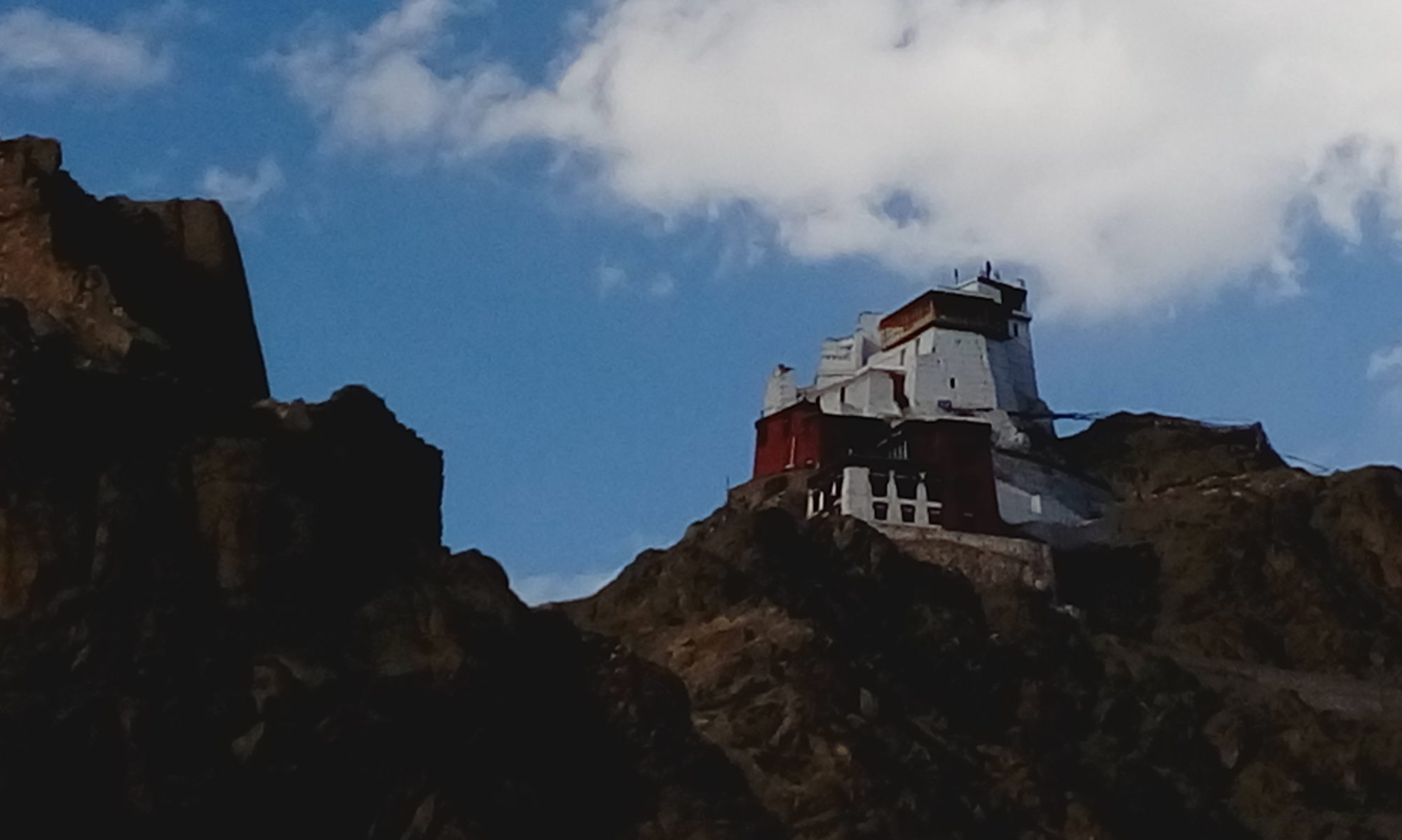‘It was golden brown? You should see it in the summer when it is green or in winter when it is white.’ We are told upon our return from Mechukha, making it sound like a seasonal chameleon. It took us almost two days of being on the road.. Correction.. one day on a road and thereafter a dirt track that went from bad to backbreaking to enter the traditional Tibetan style gate at the beginning of Mechukha. Chameleon or not, what Men-chu-kha or ‘medicinal snow of water’ (As the name means in the Memba language) at 6000 feet was, was tonic. The cold wind blew all the tiredness away and the sight of bare moulded hills, golden in the afternoon light with a gentle grey Yargyup Chhu was a vision of timeless tranquillity. What else was it?
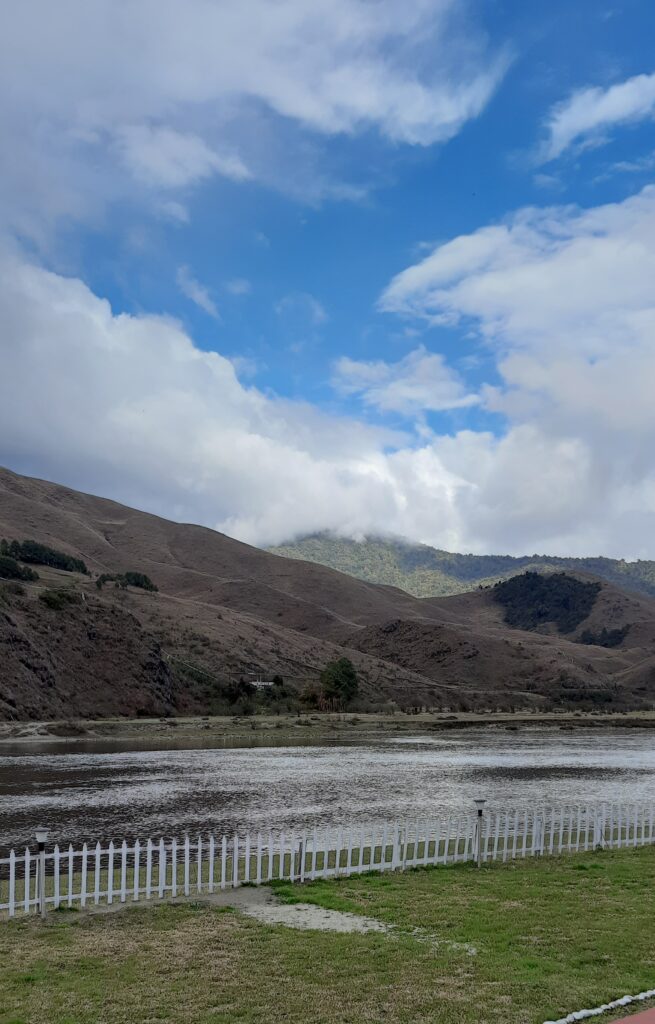
Technicoloured Mechukha
We enter the town‘s wide main street lined with shops, their windows displaying colourful wares but everything makes its way up, like us, and adds to the cost. The gaily painted stilted wooden houses sit surrounded by barren kitchen gardens and trees in bloom. Most have colourful Tibetan prayer flags. The river is a smoky grey thread skirting the low range with sagging bridges connecting the far bank.
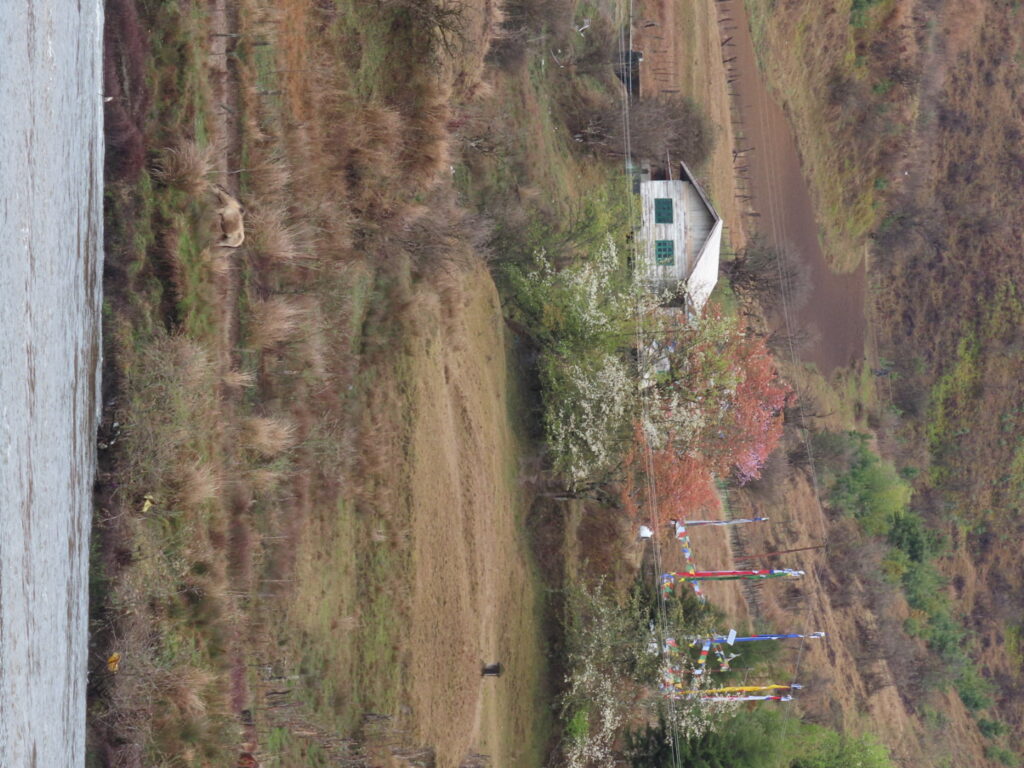
After a quick late lunch, we make a run for Dorjeeling village tucked behind the range which has Hollywood inspired Mechukha written on top. A great day hike, I think. The village spreads out in the shallow moorland. Scattered houses in technicolour, accompanied by prayer flags and flowering trees are a recurring sight.
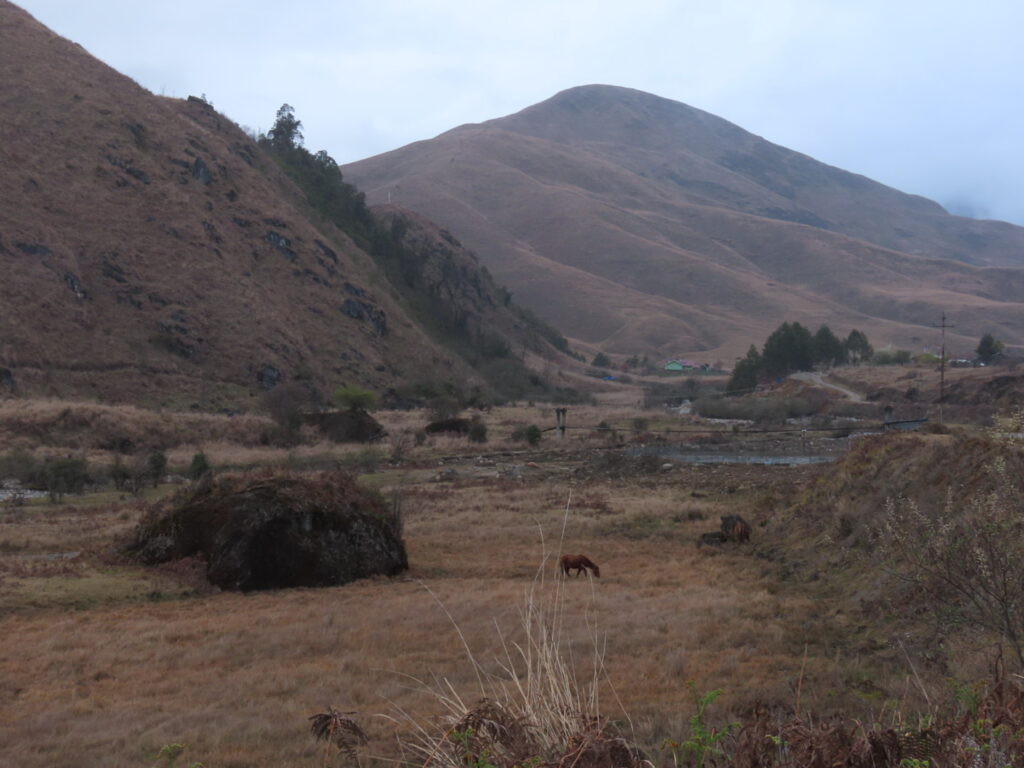
We make our way to a low walking bridge hanging over a stream but some planks are missing as are bits of the side steel mesh. Having explored the land of swinging bridges a bit, I have yet to cross one but this is still not The one. Dinner is a warming bowl of thukpa and ubiquitous chowmein at one of small eateries in the Mechukha market.
Snow Show
I am woken up early and dragged out of a super cozy bed. One look at all the snow and the cold ironically ceases to matter. The clouds, like stage curtains, have risen to reveal the day’s show and though a wide V in the immediate range the towering forested range is visible. Its crest and trees covered with fresh powdery snow. All around, the dark blue mountains have a white mantle.
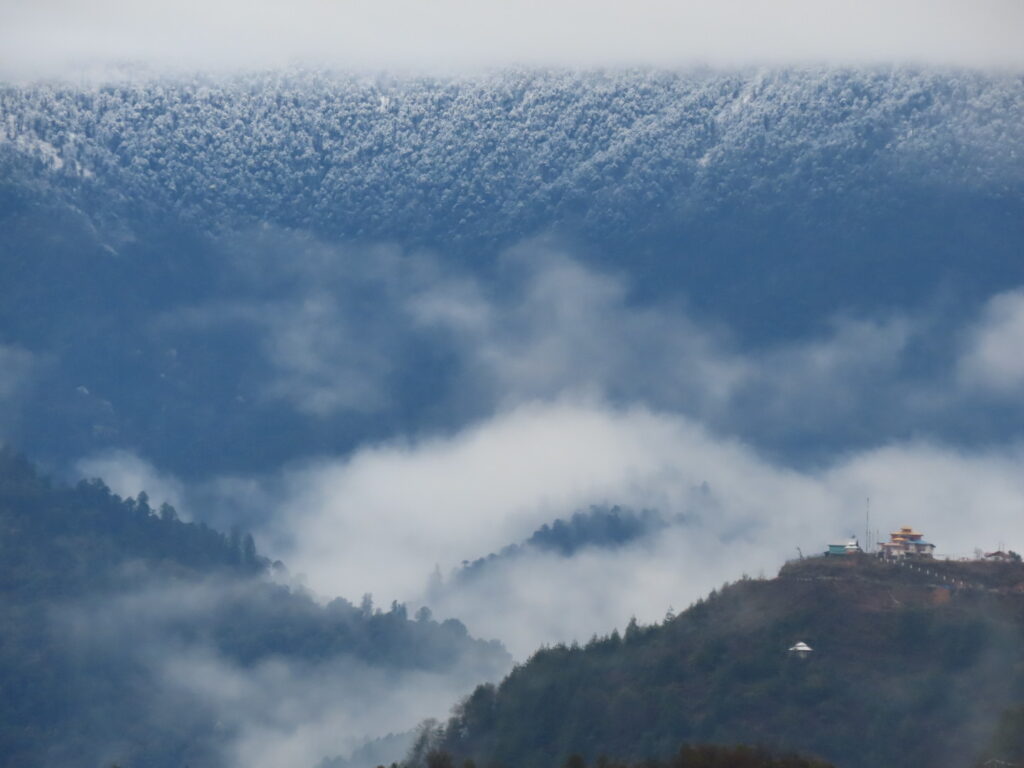
The tiny yellow red monastery on the hillock guarding one end, makes a dramatic picture against the descending clouds and deodar covered mountains. Across the river the prayer flags have yet not been woken by the breeze but the ponies chomp around a Chorten.
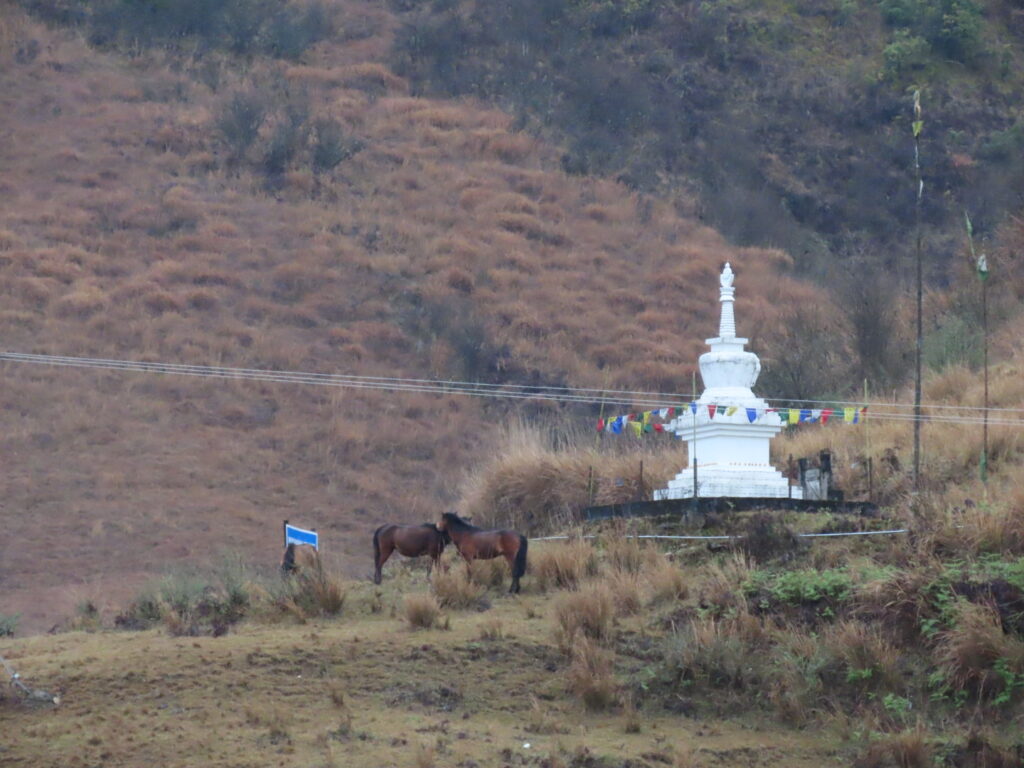
We are on the road soon, climbing into a narrowing valley. Blooming white and pink rhododendrons dot the deodar forest. We reach the ITBP camp above the confluence of the Yargyup Chhu and Lemang Chhu on the only flat ground for miles. A permit is needed to go beyond but couple of scooters whiz past. We cross a churned-up dirt patch beyond the camp, swerving and tipping crazily. I close my eyes and curse my choices and pray. (Again!) We make our way up to rocky, snow bound Lemang, the last post on the Indian side where civilians are permitted, crossing a small bailey bridge and chorten looking gay and festive with prayer flags below a gigantic rocky massif.
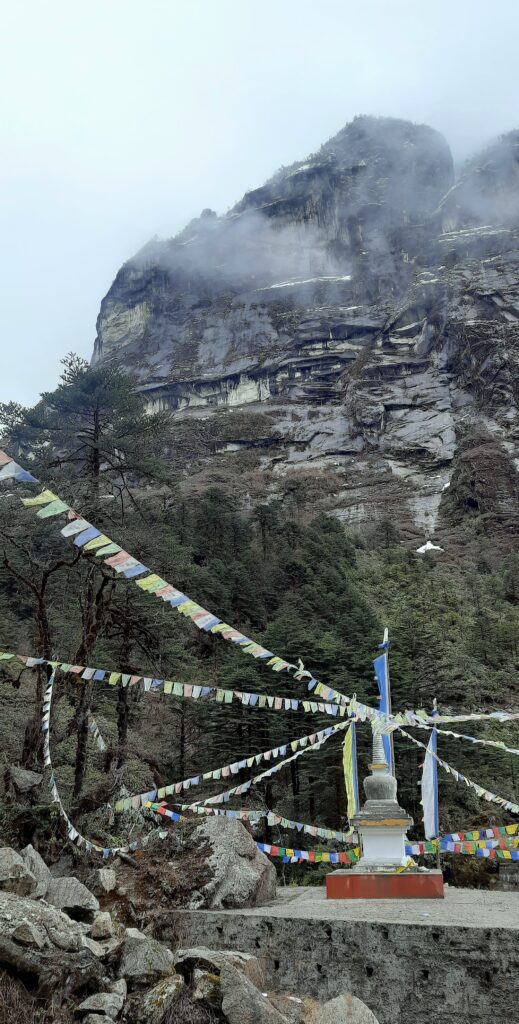
Milky waterfalls, twinning with the rhododendrons, disappear into the depths of the gorge. I am gifted pink ones by the man. (Later I read about a genus discovered recently that is found only in that area) We enjoy the fresh snow against a backdrop of grey clouds shrouding the bowl of whitened rock and trees that is Lemang. While returning we hear a crackle, then a rumble and see a mini avalanche on the heights above. Nature is magnificently raw here.
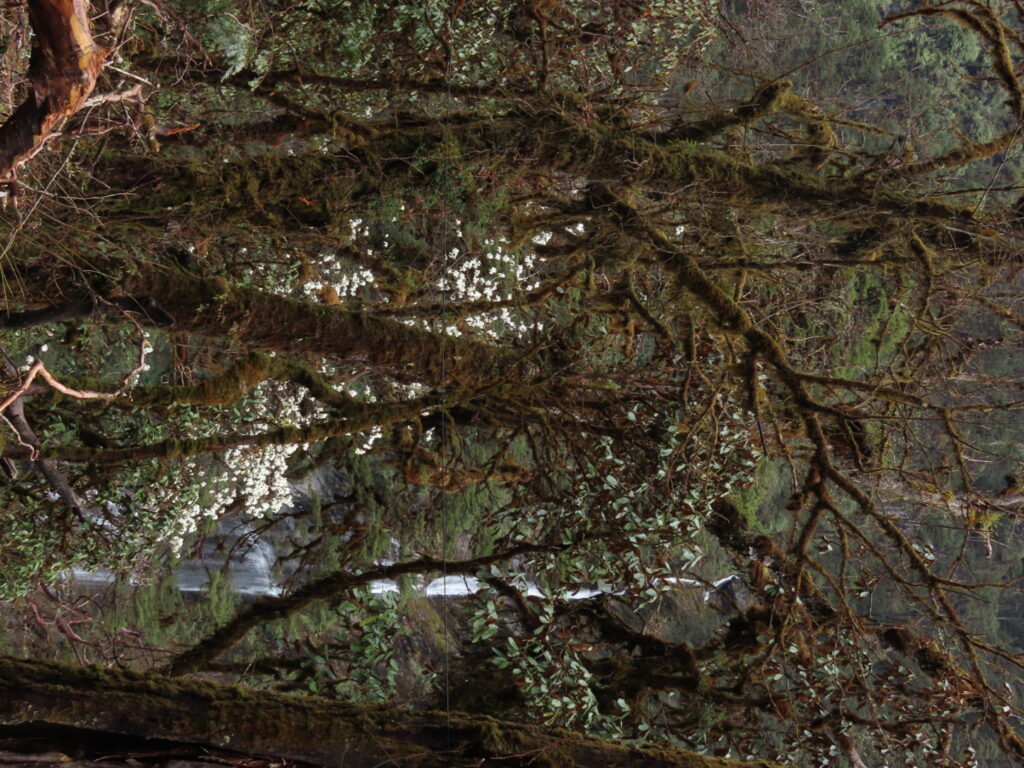
Many coloured Monasteries
While returning, the rain gods hold on and don’t rain on our parade, too hard. We stop to see Hanuman’s face on the rock face. Nature has hewn a face alright with heavy brows and a wry look. But Hanuman?… At the confluence of the Yargyup Chhu and a pretty stream brightened by white rhododendrons and colourful flags, a Gurudwara made by the army is a pit stop for most visitors. I think the langar is the main magnet because the legendary rock is tucked away across the road. A narrow path marked by prayer flags brings us to a bright red temple abutting a boulder.
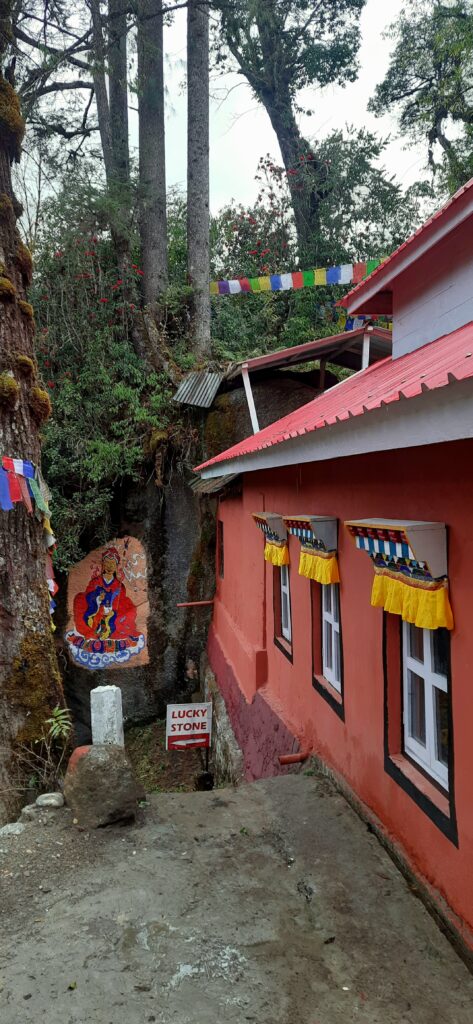
This place, claimed by two religions, has a rock with deep indentions made supposedly by Guru Nanak or Guru Padmasambhav meditating under it, depending on whose story appeals more. Another legend takes us down a slippery wooden staircase to a cracked boulder which only the ‘pure’ can pass through. I look through the crack and feel my claustrophobia hold my adventurous spirit’s hand and nudge it towards the stairway to the stream below. I tamely follow to the stone bank below. Small piled up stones are reminders of the faithful and we hunt for the fabled wishing pool. In a rock we find a milky bowl with a never-ending supply of water and pebbles. I hesitate and with que sera sera shrug gamely fish out the three pebbles that will portend our luck. With a mixed bag deposited into the adjoining pool we make our way to the next monastery- the five hundred year old Samten Yangchag.
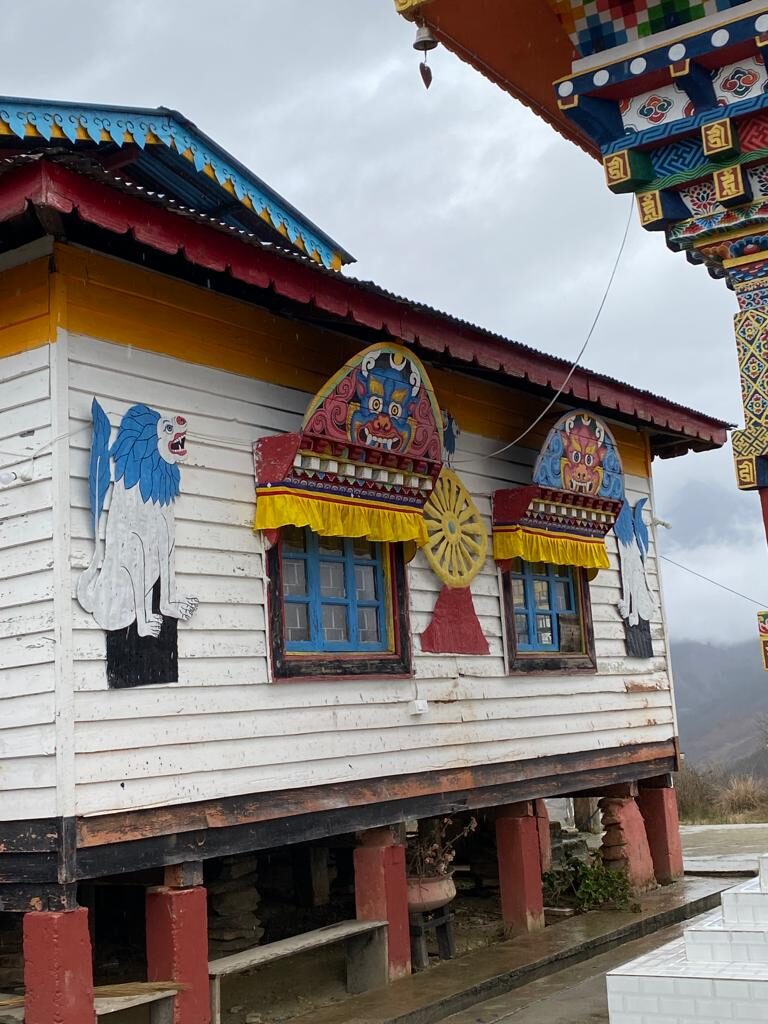
It sits on a hill with a commanding view of the valley, which the gods inside cannot see anymore thanks to the massive new chorten with a base of white bathroom tiles. The double storied simple wooden structure on low stilts has brightly coloured eaves and multicoloured windows. It is being repainted inside and the deities look scattered but still dwarf everything inside. The caretaker’s wife and impish little son, Dorje show us around. He scampers around laughing happily but baulks at being photographed. Outside the wind has whiplashed a peachy tree nearby into a permanent stoop.
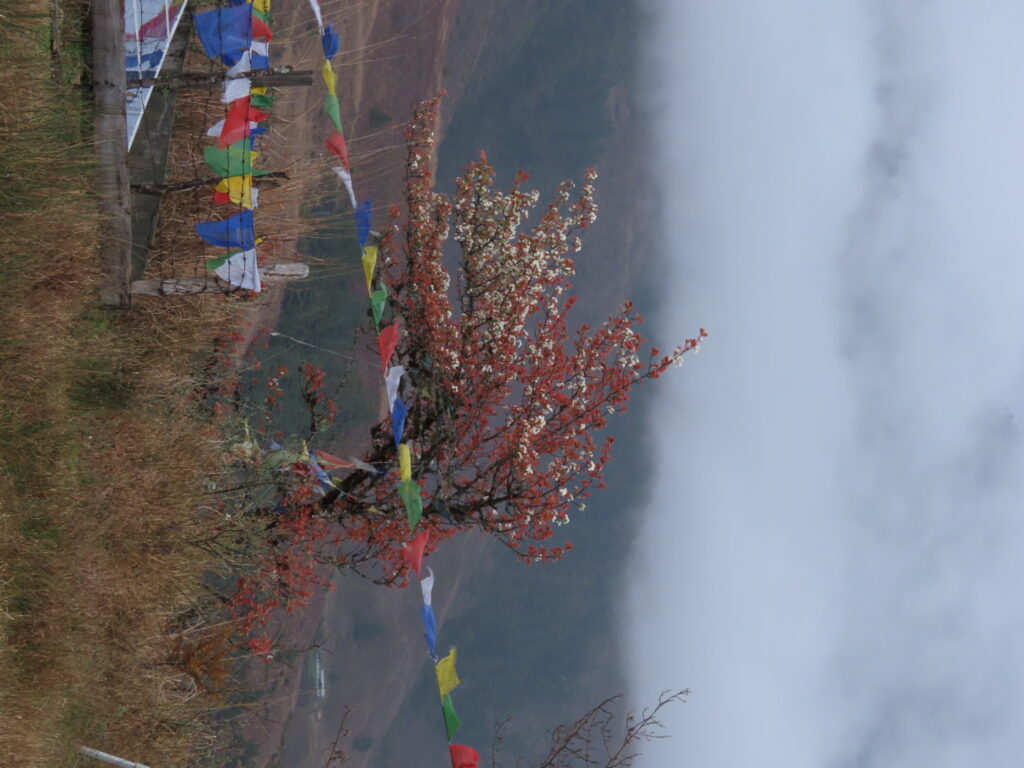
Low-hanging Fruit
After a late lunch we walk along the river to a hanging bridge. It is low over the shallow and silent river. To do or not to do? Lets just do it! I realise if it doesn’t sway I’ll be fine but that means traversing it alone.
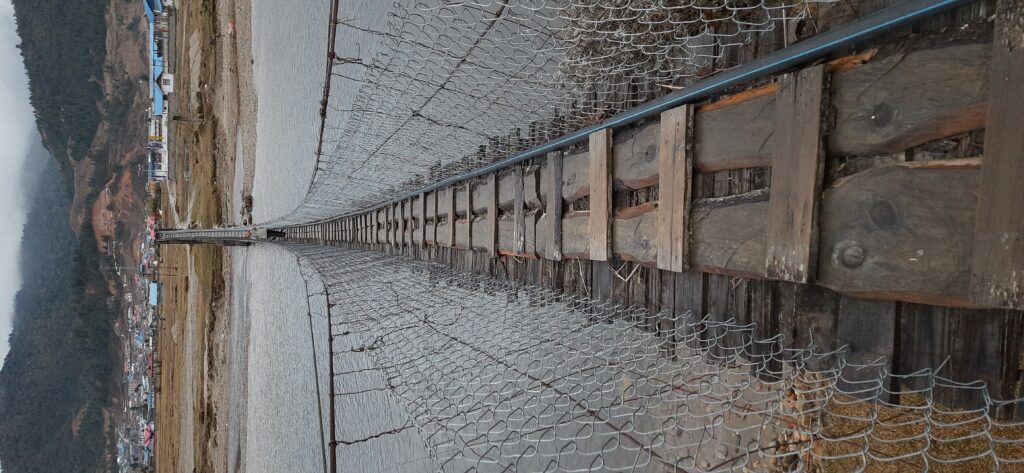
Also, there is no other way to walk to those picture postcard houses across the river. I do it! Haha..I hope I can repeat the feat, else it’ll be a looong walk in the dark. In the fading light a lady chasing her duck out from under her green house while a little boy peers out of the brightly lit kitchen window. We exchange greetings and she poses for a photo, asking how does she look. She looks like a warm sight on a cold evening.
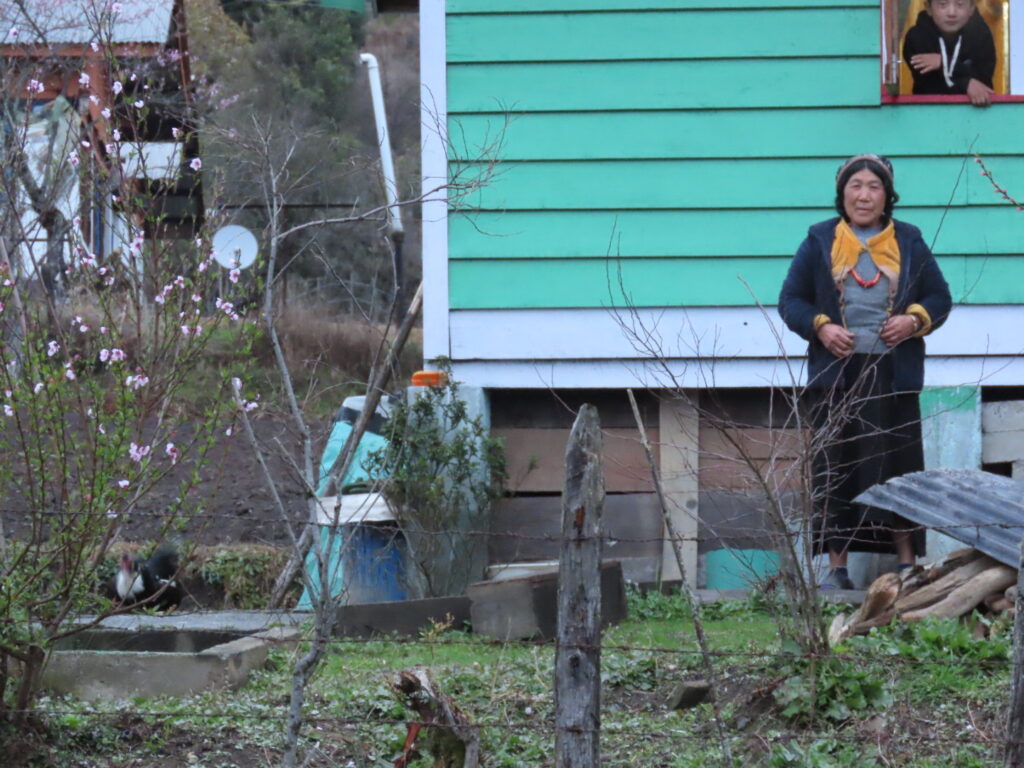
Early next morning after a night of heavy rain, the deodars and the crests of the higher horse-shoe ranges cradling this golden valley are liberally dusted with white. On the road I turn back to see the peaks being swallowed up by the clouds. The show is over for the day. I’ll be back. I’m ready for an encore, in any colour.
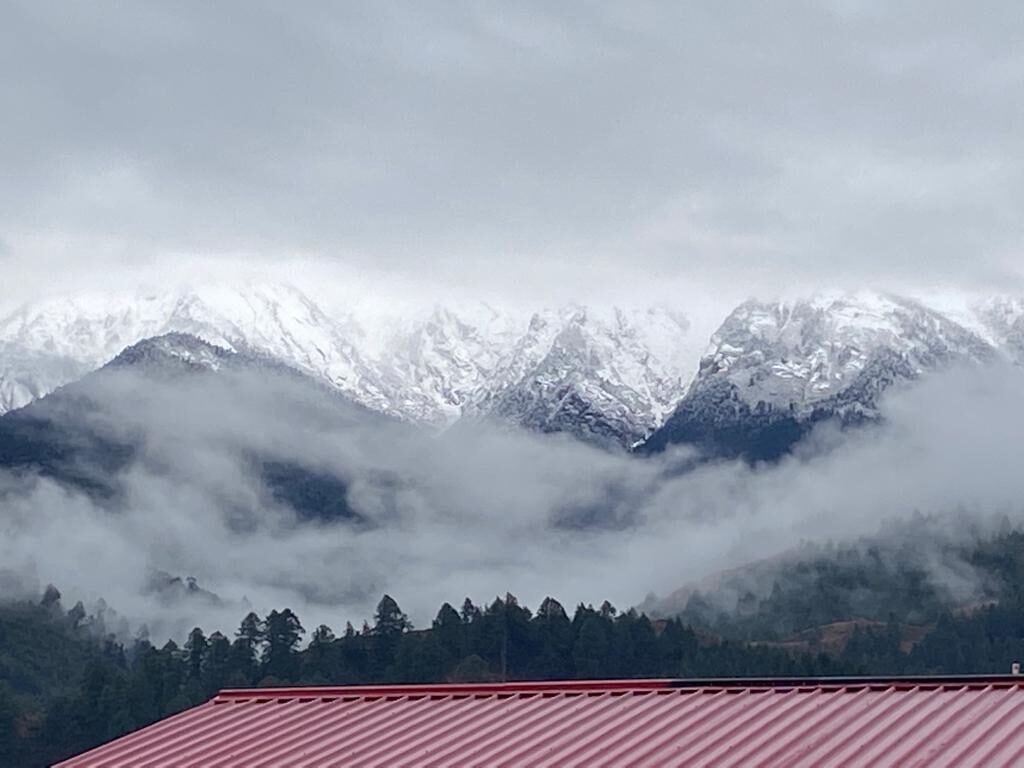
Fact File-
Getting there-
Rail– Take a train to Dibrugarh, Guwahati or Naharlagun and then a taxi to Mechukha.
Road– Mechukha is a two day journey with a night halt at Aalo.
Air-Pawan Hans helicopters connect Naharlagun (Itanagar) via, Pasighat and Aalo to Mechukha on Mondays and Saturday. But they are weather dependent.
Staying– Aalo has simple budget hotels and homestays.
Mechukha has mostly homestays and one or two small hotels.
Best time to visit– September to May. But carry your raincoat and the water bottle!
Avoid plastics or carry them back .
